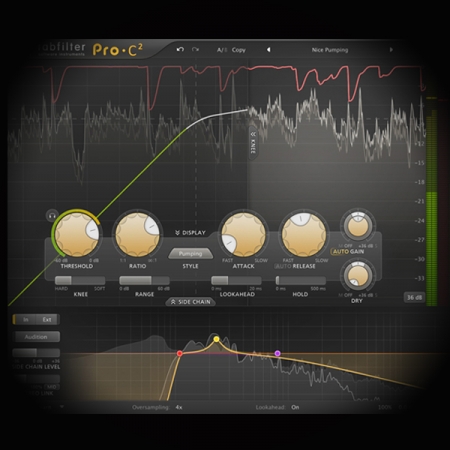Description
Transparent Brickwall Limiting video tutorial explains how a brickwall limiter works and how to use it to master demos and mixes.
In modern-day productions limiters are used more and more for both applying colour to a mix and for getting the mix to sit loud and proud. However, we are also starting to see producers using limiters to catch errant transient peaks and specifically ISPs (intersample peaks). This type of corrective processing requires a limiter that is both transparent and detailed.
But first, let us get some definitions out of the way:
Intersample Peaks – ISP
Basically, and this really is keeping it simple, the DA (digital to analogue) process will use a reconstruction filter to recreate the analogue equivalent of the digital waveform and this can result in some audio waveforms reaching peaks above 0dBFS in-between the sampled values. This means, for example, that although all the sample values are limited to a maximum of 0dBFS in the digital domain, the reconstructed waveform may have sections that will exceed this. The reconstructed waveform will have what we term as Inter-Sample Overs. Is this a huge problem and if so are there workarounds? If I had to be honest almost all ISP problems can be negated with sensible headroom margins, but in the instances of wanting your mix to hit ‘hot’ some of these errant spikes will cause problems. A simple yet effective solution is to set your limiter’s output ceiling to -0.3. That usually ensures that all ISPS are caught in time.
Limiter
Transparent Brickwall Limiting video explores how limiters differ from compressors.
A limiter keeps signal peaks from exceeding a pre-determined level.
While a compressor reduces the overall dynamic range, a limiter affects only the highest peaks. Limiters have very fast attack times, very high compression ratios and a high threshold. You can turn your compressor into a limiter by using a very high threshold and ratio. The ‘classic’ definition is that a limiter ‘flattens’ all peaks above a certain level, but leaves lower-level sounds intact. This sounds unnervingly like a compressor but there is a difference in how the threshold is defined between the two topologies. In traditional downward compression the threshold is used to determine at which point compression take place. Everything above the threshold is compressed whereas everything below the threshold is left untouched. With limiting the threshold is used as an output ceiling in that the ceiling sets the maximum output value that the limiter can then drive into – in other words the signal is not allowed to exceed the threshold. We use the term ‘ceiling’ to describe this type of threshold. We vary the gain of the input signal to force it into the ceiling. The more we drive the input into the ceiling the more limiting effect we achieve. Limiters are great for capturing peak transients, ISPs (intersample peaks) and errant spikes. The fast attack ensures that transients are captured immediately and the high ratio allows for a fast gain reduction of peak transients.
Now that we understand what a limiter is and how it works we can look at brickwall limiting.
Brickwall Limiter
Whereas a traditional limiter will allow certain peak transients to exceed the ceiling when the input gain is driven hard a brickwall limiter will not allow any transients, be they ISPs or random errant spikes, through irrespective of how hard the input is driven. For this reason alone mastering engineers use brickwall limiters to catch any ‘overs’ that have been missed through the signal path.
In the Transparent Brickwall Limiting video, I use the wonderful AOM Invisible Limiter to catch and manage errant spikes and to make a strong dynamic master. I explain how the limiter works and how best to use it on a master stereo mix. I explain how different settings impact the sound and what settings to use when trying to achieve a transparent master. Every feature of the invisible limiter is explained and demonstrated.
The plugin used in this video:
Topics covered in this video are:
- How to use a Limiter with Transparency for Pre Mastering
- Limiter Ceiling and Headroom
- Unity Gain Monitoring
- Level Matching
- Driving for Colour
- Clip and Clipping
- Suppression and Overshoot
- Oversampling for Transparency
If you found this tutorial helpful then give these a try:
Transparent Limiting with a Compressor
Mix Bus Compressor Topologies – which compressor to use on the master bus
Summing in a Mix within your DAW
MixBus-Transparent Pre Mastering
Working the Air Band with Equalisation
DIY Mastering using Commercial Mix Profiles











